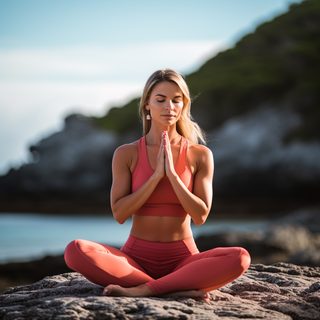News
-
The Little Known Powers of Crystals in Fitness for Energy & Healing
When one thinks about the different alternate therapies that are out there today, have you ever thought that the usage of healing crystals is one that many place right there...
-
Why Adding Olive Oil to your Diet Can Be Your Best Health Resolution Gift
If you’re even remotely familiar with the Mediterranean diet, you know that olive oil is king. And that's not just because olive oil can add even more flavor to oven-baked...
-
Resolutions: How to Make Yourself Want to Exercise
With a new year comes thoughts of resolutions, and the areas of doing better with your health, wellness and exercise are no exception in those thoughts for new starts. Even...
-
Have Your Eating Habits Changed Due to Covid & Are They Good New Healthier Ones or Bad?
The coronavirus (COVID-19) pandemic has been ingrained in our daily lives for nearly a year now and seems to be here for a bit longer. In the midst of its...
-
2020’s Simple Non-Exercise Things To Do To Combat Holiday Stress
2020 isn’t over yet, and COVID is still here -- just in time to add anxiety and tension to the normal holiday stress that comes every year. Between the gift...
-
How to Stay Motivated Exercising at Home
Is COVID-fatigue bringing on exercise-fatigue? Is your gym not able to open yet due to restrictions in your area or have you recently been informed that it will shut its...
-
Sitting Positions for Exercise Workouts & Body Healing
Would you believe us if we said that sitting like your ancestors could save your health? You’d probably be at least a little skeptical. After all, the science surrounding our...
-
At-Home Monthly Calendar of Free Online Exercises, Meditations, Health & Fitness Workouts
Looking for free at-home online exercises, meditations, health & fitness workout ideas? We’ve put together a great selection of totally FREE (no trials, no credit cards) events, classes and instructions...
-
10 Ways to Help Reduce Your Risk of Breast Cancer
For many women, the words “breast cancer” are scary and can cause panic and worry, but they’re hard not to think about sometimes. Many people know a friend...
-
What is Too Close? Investigation Reveals People Don’t Know Cell Phone Safety Distances
~ Updated Sept 2020 How close is safe for you to carry your cell phone? Is this a question you even knew you needed to ask? If the answer is...
-
5 Phone Apps That Keep Runners Safe
Find new & more safety phone apps: Safety APPs for Runners - 2020...
-
Safety APPs for Runners – 2020 Update – Free or Low-Cost
With tons of running apps to help you get started or find a good path or trail, we like...

